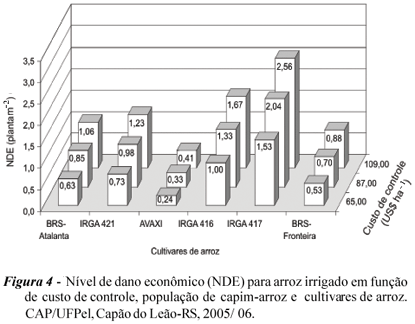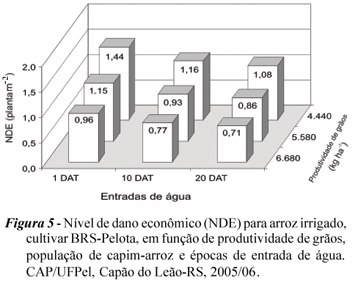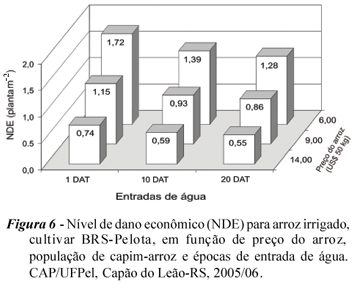Economic weed threshold (EWT) for monitoring barnyardgrass infestation in flooded rice farms allows the adoption of crop management measurements and a rational use of herbicide. The objective of this study was to determine EWT for barnyardgrass based on a single year in function of barnyardgrass populations, rice varieties and flooding timings. Thus, two trials were carried out using a completely randomized design with no replications. The first trial treatments consisted of six rice varieties: BRS-Atalanta, IRGA 421 (very short cycle); IRGA 416, IRGA 417, Avaxi (short cycle) and BRS-Fronteira (medium cycle); as well as ten barnyardgrass populations. The second trial treatments were flooding timings: 1, 10 and 20 DAT (days after herbicide treatment) and barnyardgrass populations. The estimated EWT for barnyardgrass varied in function of the adopted management practices in the flooded rice crop. The estimated EWT for rice IRGA 416 and 417 was greater than that of the other cultivars when in barnyardgrass competition. Flooding timing delay reduced EWT for the BRS-Pelota rice variety. Increased potential yield losses, product value and herbicide efficiency as well as reduced control price reduced EWT, rendering viable the adoption of management practices at low barnyardgrass density when competing with flooded rice.
economic study; integrated management; mathematical models













